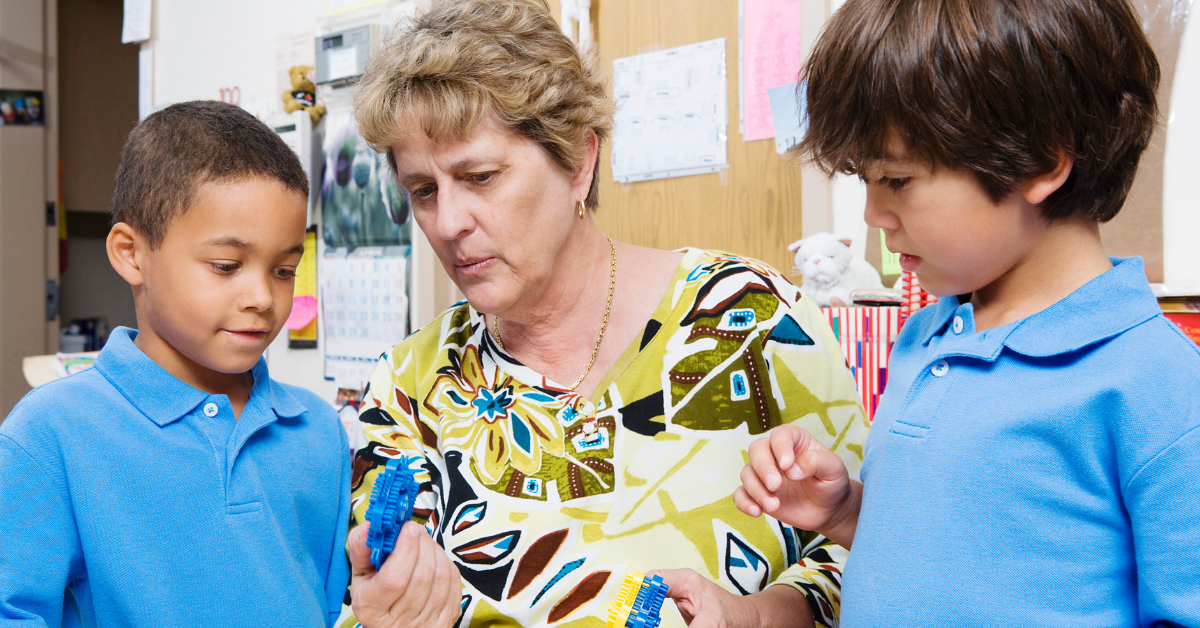
“When little people are overwhelmed by big emotions, it’s our job to share our calm. Not join their chaos.” L.R. Knost
Human babies come into the world utterly defenseless. While some mammals learn very quickly to walk and find their food, human babies require constant help for their survival. The same is true when we consider emotional regulation and calm. In order for a child to demonstrate self control as they grow, they must first have experienced having their needs met by their caregivers. The skills of emotional regulation are built out of place of having been soothed by others. Any new parent will tell you about the rocking, feeding, holding, burping and walking with a baby to ease their cries. Every interaction is teaching the baby how to calm. These interactions are the building blocks to emotional regulation as a child grows. What all students need is an environment that soothes and a caring adult who is prepared to co-regulate.
The power of co-regulation comes when we shift towards understanding the behavior and the need behind it. Understanding how students learn regulation gives us insight into why some students we are seeing today struggle with emotional regulation. When trauma is part of the profile, extensive use of technology is prevalent, or increased stressors exist in the home, our students are losing the ability to regulate their emotions. They are lacking interactions with trusted adults who model regulation skills.
When Their Storm Meets Our Calm Co-regulation Occurs
Think of a classroom or school as an ecosystem. Emotional regulation is part of this ecosystem and co-regulation becomes an integral part in helping maintain balance. You have seen and felt when a classroom becomes unbalanced, when students feed off each other's energies. So, it shouldn’t be too hard to convince you that co-regulation is much more powerful than the notion of self-regulation. When a student becomes disregulated their classmates naturally look to each other to gather information on how they should behave. When the majority of the students have a solid understanding of co-regulation because they are often around adults who are calm, then they don’t add fuel to the fire. However, those students who have experienced trauma may add to the chaos because it is with what they are most familiar. When a student is in a storm it is imperative that they are met with calm. This needs to be embedded in the classroom procedures and be woven into the fabric of the school culture. All adults must be on board in understanding that we must teach social emotional skills, model co-regulation, and meet any type of chaos with calm. Everyone ensures our students navigate bumpy waters without judgement but compassion and consistency.
5 TAKEAWAYS
Meet Chaos With Calm: We do this through our voice, choosing to listen instead of talk, creating predictability, and validating emotions and feelings. This idea isn’t just for the students either. Adults experience stress and chaos too! Just think about how we are functioning in education during a pandemic. Control what you can control, which is your response to chaos. If you want a calm student, focus first on calming yourself.
The Redirect: Have you ever employed the “random conversation” technique when a student is completely shutdown? You know the one where you randomly have a conversation with another student or adult in the vicinity of the struggling student to see if you can coax them out of their “shell.” This is the redirect! It is a wonderful co-regulation technique where we calmly carry on around the student by not giving them direct attention. Even just sitting near the student with an activity (lego or playdough) and subtly asking them to join. The redirect baby!
Take a Universal Approach: Instead of focusing only on those students who need it the most, build co-regulation into the classroom for all! Modeling and focussing on co-regulation and social emotional learning builds the skill set of all within the school ecosystem. Consider things like a mindful minute, breathing exercises, and/or social emotional lessons. Remember this is more than a one time lesson, it must be embedded regularly.
Label Emotions: It’s all about building emotional literacy. By explicitly labeling the emotion we help our students connect their feelings to words. In this process we validate the student in the moment, connect with them that it is ok to feel these emotions, and support them in ways to reduce their stress and anxiety. By uttering the words “I feel…….” the person takes control to move forward rather than spiraling further or sliding back down to the basement of the brain.
The Tap Out: Recognizing in ourselves when we aren’t able to support co-regulation is a powerful tool. A school culture that honors vulnerability and supports each other to step away from stressful situations helps ensure a student is always met with calm. It’s okay to “tap out” when you need to. This is not failure, but ensures a student first mentality.
Co-regulation is all about showing our students various pathways to emotional regulation and growing their ability to respond, rather than react. Notice we don’t mention that co-regulation shifts to self regulation. Is self regulation a myth? Is it attainable? Perhaps, but in the context of kids and young adults the lens of co-regulation is more sustainable.

